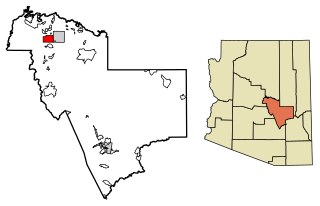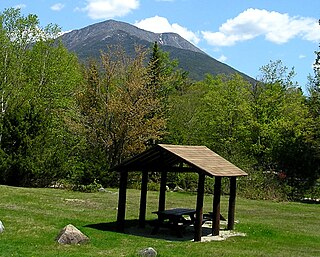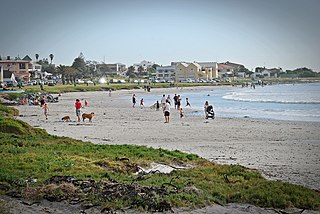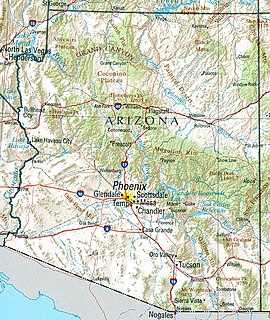This article needs additional citations for verification .(December 2009) (Learn how and when to remove this template message) |
Kamieskroon | |
|---|---|
 Kamieskroon Church | |
| Coordinates: 30°12′S17°56′E / 30.200°S 17.933°E Coordinates: 30°12′S17°56′E / 30.200°S 17.933°E | |
| Country | South Africa |
| Province | Northern Cape |
| District | Namakwa |
| Municipality | Kamiesberg |
| Area | |
| • Total | 8.78 km2 (3.39 sq mi) |
| Elevation | 750 m (2,460 ft) |
| Population (2011) [1] | |
| • Total | 893 |
| • Density | 100/km2 (260/sq mi) |
| Racial makeup (2011) | |
| • Black African | 10.8% |
| • Coloured | 76.1% |
| • Indian/Asian | 0.1% |
| • White | 13.0% |
| First languages (2011) | |
| • Afrikaans | 96.9% |
| • Tswana | 1.5% |
| • Other | 1.5% |
| Time zone | UTC+2 (SAST) |
| Postal code (street) | 8241 |
| PO box | 8241 |
| Area code | 027 |
Kamieskroon is a small town in the Kamiesberg Local Municipality, lying in the foothills of the Kamiesberge at an elevation of approximately 800 m (2 600 ft). The town is more or less in the centre of Namaqualand, about 70 km (43 mi) to the south of Springbok, Northern Cape, South Africa. It is known mainly for its abundance of wild flowers during spring.
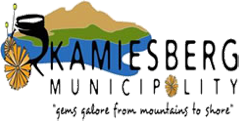
Kamiesberg Local Municipality is in South Africa.

The Kamiesberg or Kamiesberge, is a mountain range of jumbled granite inselbergs or bornhardts dotted over sandy plains and centered on Kamieskroon in Namaqualand in South Africa. This range is very like the Matopos of Zimbabwe in appearance. It stretches for about 140 km (60 mi) from Garies in the south to Springbok in the north and forms a plateau between the Sandveld of the Cape West Coast and Bushmanland in the east, with the Hardveld of the mountainous central Kamiesberg escarpment in the midst.

Namaqualand is an arid region of Namibia and South Africa, extending along the west coast over 1,000 kilometres (600 mi) and covering a total area of 440,000 square kilometres (170,000 sq mi). It is divided by the lower course of the Orange River into two portions – Little Namaqualand to the south and Great Namaqualand to the north.
Kamieskroon was founded in 1924, when the Dutch Reformed Church bought the land to relocate from Bowesdorp, 8 km to the north of the current location of the town. The move was forced by a shortage of water and restricted space for the growth of the town. Kamieskroon is located at the foot of the "Kroon" (Afrikaans, meaning Crown), a small koppie that resembles the crown of a king and is near Sneeukop, the second highest peak in Namaqualand. Also located close to Kamieskroon is Boesmankop, a mountain that resembles a Boesman (Bushman or San) lying on his back. Between 1969 and 2003 it was a military base housing two Armoured Squadrons equipped with Ratel-90 and four Companies of SA 9th Light Infantry Regiment.
The Dutch Reformed Church was the largest Christian denomination in the Netherlands from the onset of the Protestant Reformation until 1930. It was the foremost Protestant denomination, and—since 1892—one of the two major Reformed denominations along with the Reformed Churches in the Netherlands.
Bowesdorp was formerly a town between Garies and Springbok, 60 km south of the latter. Established on the farm Wilgenhoutskloof and named after Henry Bowe, doctor in Namaqualand. Situated in a narrow valley between high mountains, there was not sufficient water or space for expansion, and the church, post office, police station and shops were moved to Kamieskroon, 7 km away.
Namaqua National Park is located 20 km west of Kamieskroon. It is 1,000 km² in area and its principal purpose is to preserve the natural local flora. Since 2002 native wild animals have been re-introduced to the Park. (They had been shot out at least a century before). Springbok, Hartebeest and Oryx (Gemsbok) now roam there again.

Namaqua National Park is a South African national park situated approximately 495 km north of Cape Town and 22 km northwest of Kamieskroon. It has an area of more than 700 km2. The park is part of Namaqualand, an area covering 55,000 km2 located within the semi-desert Succulent Karoo biome. This biome is a biodiversity hotspot with the largest concentration of succulent plants in the world. The park also has an arid environment with succulent plants. The park was created to protect its flowers. During the spring, wildflowers bloom there in a spectacular fashion. The park's main tourist attraction is this abundant spring bloom of brightly coloured wildflowers.

The hartebeest, also known as kongoni, is an African antelope. Eight subspecies have been described, including two sometimes considered to be independent species. A large antelope, the hartebeest stands just over 1 m (3.3 ft) at the shoulder, and has a typical head-and-body length of 200 to 250 cm. The weight ranges from 100 to 200 kg. It has a particularly elongated forehead and oddly shaped horns, short neck, and pointed ears. Its legs, which often have black markings, are unusually long. The coat is generally short and shiny. Coat colour varies by the subspecies, from the sandy brown of the western hartebeest to the chocolate brown of the Swayne's hartebeest. Both sexes of all subspecies have horns, with those of females being more slender. Horns can reach lengths of 45–70 cm (18–28 in). Apart from its long face, the large chest and the sharply sloping back differentiate the hartebeest from other antelopes.

Oryx is a genus consisting of four large antelope species called oryxes. Three of them are native to arid parts of Africa, and the fourth to the Arabian Peninsula. Their fur is pale with contrasting dark markings in the face and on the legs, and their long horns are almost straight. The exception is the scimitar oryx, which lacks dark markings on the legs, only has faint dark markings on the head, has an ochre neck, and horns that are clearly decurved.
The climate is arid but temperatures are moderated somewhat by the elevation. Daytime temperatures commonly reach thirty-five degrees Celsius (95°F) in summer while some frost may be experienced during clear winter nights.



